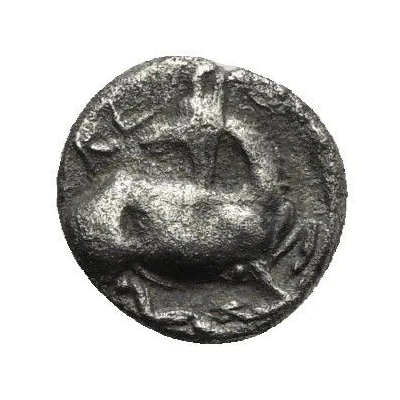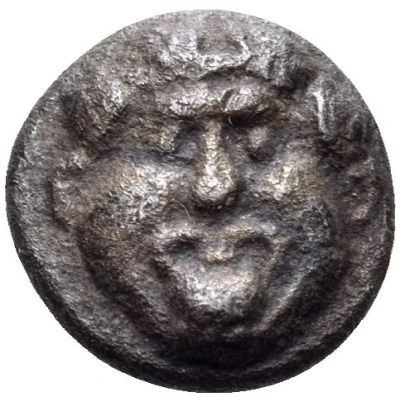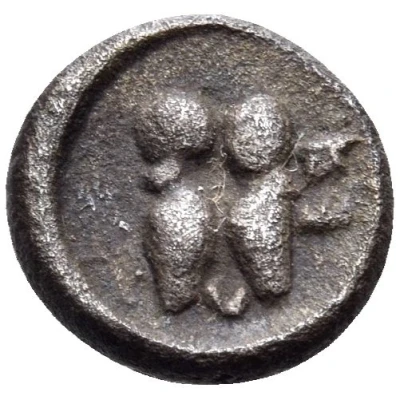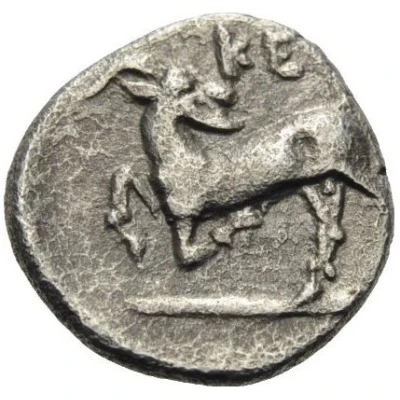


Obol 420 BC - 400 BC
| Silver | 0.7 g | 9 mm |
| Issuer | Kelenderis (Cilicia) |
|---|---|
| Type | Standard circulation coin |
| Years | 420 BC - 400 BC |
| Value | Obol (⅙) |
| Currency | Drachm |
| Composition | Silver |
| Weight | 0.7 g |
| Diameter | 9 mm |
| Shape | Round (irregular) |
| Technique | Hammered |
| Orientation | Variable alignment ↺ |
| Demonetized | Yes |
| Updated | 2024-10-10 |
| Numista | N#419909 |
|---|---|
| Rarity index | 95% |
Reverse
Goat kneeling right, head left.
Script: Greek
Lettering: KE
Translation: Kelenderis
Interesting fact
The Obol coin from Kelenderis (Cilicia) was used as a form of currency in ancient Greece and its design has been found to be quite unique. The coin features a distinctive 'square-shaped' design, which sets it apart from other coins of the time that typically had a round or oval shape. This unique design feature has led some historians to believe that the Obol coin may have been used as a form of 'token currency' or 'chit' within a specific community or region, rather than a widely-used form of currency. It's fascinating to think about how a coin's design can provide clues about its usage and significance in ancient societies!
Price
| Date | Mintage | VG | F | VF | XF | AU | UNC |
|---|---|---|---|---|---|---|---|
| ND (420 BC - 400 BC) | - | - | - | - | - | - |
Values in the table are based on evaluations by sales realized on Internet platforms. They serve as an indication only for Obol (420 BC - 400 BC) coin.



